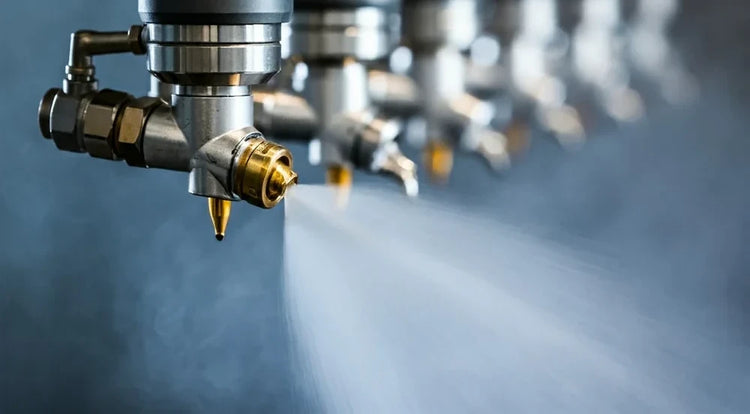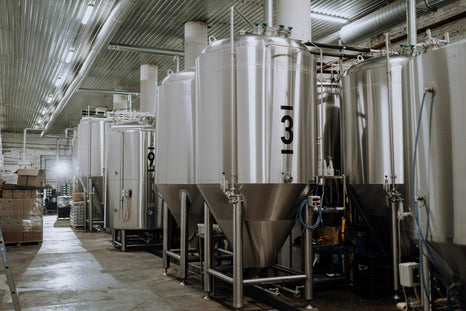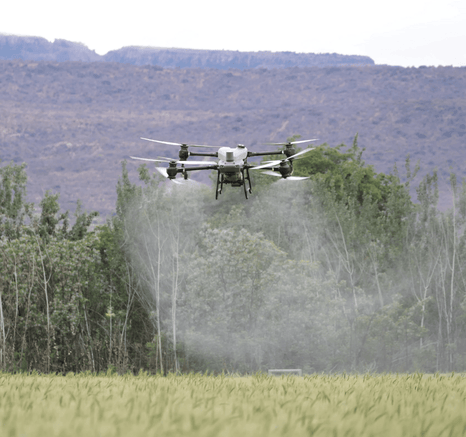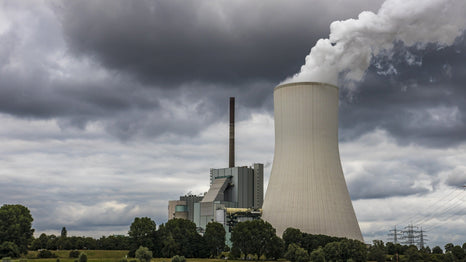The car world is always changing, right? It's all about making cars run better, use less gas, and be kinder to the environment. And guess what? One little part, the injector nozzle, has really come a long way. This tiny thing is super important for how fuel gets into your engine. It helps get the fuel in there just right. The market for these injector nozzles has really picked up lately. That's because of things like tougher rules about what comes out of exhaust pipes, the push for cars that don't guzzle gas, and more hybrid and electric vehicles showing up on the roads. It's a pretty interesting time for this small but mighty car part.
Key Takeaways
- The injector nozzle is a small but important part of a car's fuel system, helping fuel get into the engine efficiently.
- New technologies, like multi-hole and laser-drilled injector nozzles, make cars run better, use less fuel, and produce fewer bad emissions.
- Connecting injector nozzles to the internet (IoT) means we can track how they're doing in real-time, which helps with maintenance and makes them work even better.
- Stricter rules about car emissions around the world are making companies invest more in better injector nozzle technology.
- Even with more electric cars, the growing number of hybrid vehicles means injector nozzles will still be in demand for a while.
Understanding the Automotive Injector Nozzle
Functionality and Role in Vehicle Performance
An automotive injector nozzle is a critical part of your engine's fuel injection system. Its main job is to control how fuel flows and how well it turns into a mist before it enters the engine's combustion chamber. This directly affects how well your engine runs, how efficient it is, and how many emissions it produces. When fuel goes into the injector nozzle, it's pushed into the engine through tiny, high-pressure channels. This breaks the fuel into small droplets, which helps it burn better.
Think of it like this:
- The nozzle makes sure the right amount of fuel gets into the engine.
- It helps mix the fuel and air properly.
- It makes the engine run more efficiently.
A good injector nozzle can really improve your car's fuel economy and lower its carbon footprint. It's all about getting the fuel to burn as completely as possible.
Importance for the Automotive Industry
These days, injector nozzles are more than just simple fuel delivery parts. They're super important for making engines run better, saving fuel, and meeting strict emissions rules. As global rules about car emissions get tougher, car makers are using advanced spray nozzle designs that make the fuel spray finer, work more accurately, and use fuel more efficiently. These improvements help meet the goals set by governments for cutting greenhouse gas emissions and cleaning up the air.
Here's why they matter:
- Meeting Standards: They help automakers meet tough emission standards.
- Fuel Efficiency: They improve how efficiently cars use fuel.
- Performance: They boost overall engine performance.
In short, the automotive injector nozzle is key to the engine's overall performance, making it a vital part of the ongoing changes in the car industry.
Technological Innovations in Automotive Injector Nozzles
Precision and Efficiency: The Role of Advanced Nozzle Designs
Automotive injector nozzles have really come a long way. It's not just about squirting fuel anymore; it's about doing it perfectly. One big change is the move to multi-hole injector nozzles. Instead of one big stream, you get several smaller, more precise sprays. This helps the fuel mix better with the air, which means a more complete burn. And that means better fuel economy and fewer emissions.
Laser drilling is another cool trick. They use lasers to make tiny, super-precise holes in the nozzle. This gives even better control over how the fuel is sprayed. It's all about getting the fuel droplets just right for optimal combustion.
Integration of Smart Technologies: IoT and Data-Driven Performance
Imagine your car's fuel injectors talking to the mechanic before something goes wrong. That's the idea behind integrating IoT into injector nozzles. These smart nozzles can collect data on things like fuel flow, pressure, and temperature.
- Real-time monitoring of nozzle performance.
- Predictive maintenance to catch issues early.
- Data-driven insights to optimize fuel efficiency.
This data can be used to predict when a nozzle might need maintenance or replacement, preventing breakdowns and keeping your engine running smoothly. It's like having a built-in health monitor for your fuel system.
It's pretty wild to think about how much technology is packed into something as small as a fuel injector these days.
Global Importance of the Automotive Injector Nozzle Market
Growing Demand for Fuel-Efficient and Low-Emission Vehicles
The global market for automotive injector nozzles is seeing substantial growth, largely because there's a bigger push for fuel-efficient vehicles and tougher rules about emissions. As the world moves toward cleaner energy and wants to cut down on pollution, car companies are putting a lot of money into tech that boosts fuel economy and lowers the carbon footprint of their cars. Injector nozzles are super important for reaching these goals because they make burning fuel more efficient. For example, you can use coating nozzles to improve fuel atomization.
In 2023, the global automotive injector nozzle market was worth around USD 8.5 billion, and it's expected to grow by about 7.4% each year between 2024 and 2030. This growth is mostly because more people are using direct fuel injection (DFI) systems, which really depend on how well injector nozzles work to save fuel and reduce emissions.
Impact of Electric and Hybrid Vehicles on the Market
Even though electric vehicles (EVs) are becoming more popular, cars with internal combustion engines (ICE) are still the main type of vehicle on the road. Hybrid vehicles, which use both gasoline engines and electric power, have especially affected the injector nozzle market. These hybrids still need regular fuel injection systems for their gasoline engines, so injector nozzles are still needed to keep them running well and saving fuel. The rise of hybrid vehicles ensures continued demand for injector nozzles.
Investment and Strategic Partnerships
The automotive injector nozzle market is getting a lot of investment, with companies focusing on research and development to create new technologies. Specifically, car companies and fuel system suppliers are working together more often. These partnerships are all about adding the newest nozzle tech to fuel injection systems to make engines work better and cut down on emissions. These collaborations focus on integrating the latest nozzle technologies into fuel injection systems to improve overall engine performance and reduce emissions.
Here's a quick look at some key trends:
- More partnerships between car makers and fuel system companies.
- Increased investment in research and development.
- A rise in mergers and acquisitions in the automotive parts industry.
Market Trends Driving the Automotive Injector Nozzle Sector
Stricter Emission Standards and Global Regulatory Pressure
Governments everywhere are tightening up on what automakers can get away with when it comes to emissions. Think of the Euro 6 and maybe soon Euro 7 standards in Europe, or the EPA Tier 3 standards here in the U.S. To meet these rules, car companies are having to get serious about making engines cleaner and more efficient. Injector nozzles are a big part of this.
By making fuel spray better and burn cleaner, advanced injector nozzles help cut down on nasty stuff like nitrogen oxide (NOx) and particulate emissions. As long as everyone keeps caring about the environment, the demand for better spray nozzles will stay strong.
Investment and Strategic Partnerships
Lots of money is flowing into the automotive injector nozzle market. Companies are putting cash into research and development to come up with the next big thing. It's becoming common for car makers and fuel system suppliers to team up. These partnerships are all about putting the latest nozzle tech into fuel injection systems to boost how well engines work and lower emissions.
It's not just partnerships, either. There's been a wave of mergers and acquisitions in the automotive parts world. Companies are trying to get stronger in the competitive injector nozzle market. By buying up smaller, innovative companies or joining forces with tech leaders, bigger companies are setting themselves up for the long haul.
Benefits and Challenges in the Automotive Injector Nozzle Market
Benefits of Advanced Injector Nozzles
Advanced injector nozzles bring a lot to the table. They're not just about squirting fuel; they're about making engines run better, cleaner, and more efficiently. Here's a quick rundown:
- Better fuel economy: Nozzles that spray fuel in a more precise way mean less fuel wasted. This translates to savings at the pump for drivers.
- Lower emissions: Cleaner combustion means fewer harmful pollutants released into the air. This helps automakers meet increasingly strict environmental regulations.
- Improved engine performance: Better fuel atomization leads to smoother operation, reduced engine knocking, and quicker acceleration. It's all about getting the most out of every drop of fuel.
- Increased durability: Modern materials and designs mean nozzles last longer, reducing the need for frequent replacements. This saves both time and money in the long run.
Think of it this way: a well-designed injector nozzle is like a finely tuned instrument, ensuring that every part of the engine works in harmony to deliver optimal performance and minimize waste.
Challenges Facing the Market
It's not all sunshine and roses, though. There are definitely some hurdles to overcome in the automotive injector nozzle market. Spray nozzles are a key component of the fuel injection system.
- High development costs: Researching and developing new nozzle technologies can be expensive. This can drive up costs for automakers, which can then trickle down to consumers.
- Complex manufacturing processes: Making precision nozzles with intricate designs requires advanced manufacturing techniques and high-quality materials. This adds to the complexity and cost of production.
- Regulatory barriers: While stricter regulations push innovation, they also create challenges for manufacturers who need to stay ahead of the curve. Keeping up with changing requirements can be a constant struggle.
The Fuel Injection Process: A Closer Look
Okay, so fuel injection. It's not just about squirting fuel into the engine. It's a whole process, a carefully timed dance between different parts to make your car run smoothly. Let's break it down.
Fuel Injection Timing and Duration
Timing is everything. The engine control unit (ECU) decides when the fuel injector sprays fuel into the cylinder. It has to be at the right moment for the engine to work efficiently. Think of it like a drummer hitting the cymbal at the exact right beat.
Duration is how long the injector stays open. A short burst means less fuel, while a longer one means more. The ECU adjusts this based on how much power you need. It's all about getting the air-fuel mixture just right.
Types of Fuel Injectors
There are a couple of main types of fuel injectors:
- Port Fuel Injection (PFI): This is where the fuel is sprayed into the intake manifold. It mixes with air before going into the engine. It's simpler and cheaper, but not as precise. You can find spray nozzles for this type of injection.
- Direct Injection (DI): This sprays fuel directly into the cylinder. It's more precise, gives better fuel economy, and can boost power. But it's also more expensive and can cause carbon buildup.
Components of a Fuel Injector
Fuel injectors aren't just simple tubes. They're made of several parts that work together:
- Nozzle: This is the part that actually sprays the fuel. It's designed to create a specific spray pattern for good atomization. The nozzle is precision-engineered to ensure accurate fuel delivery.
- Solenoid: This is an electromagnet that opens and closes the injector. When the ECU sends a signal, the solenoid moves a needle valve to allow fuel to flow. The solenoid is a critical component for controlling the timing and duration of fuel injection.
- Needle Valve: This valve controls the flow of fuel through the injector. It's opened and closed by the solenoid. The needle valve is designed to seal tightly when closed to prevent fuel leakage.
The ECU is constantly monitoring sensors and making adjustments to the fuel injection system. It's a complex system, but when it's working right, it makes a big difference in how your engine performs.
Conclusion
So, what's the big takeaway here? Well, the car injector nozzle market is really growing. Car makers are working hard to meet new environmental rules and give people cars that use less gas and run better. With new nozzle ideas and smart tech, this market is set to keep changing and getting better. As we all look for cleaner, more efficient ways to get around, these little injector nozzles will stay a big part of how cars work in the future.











